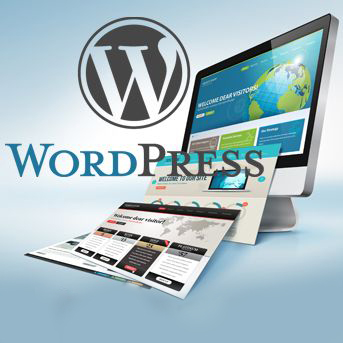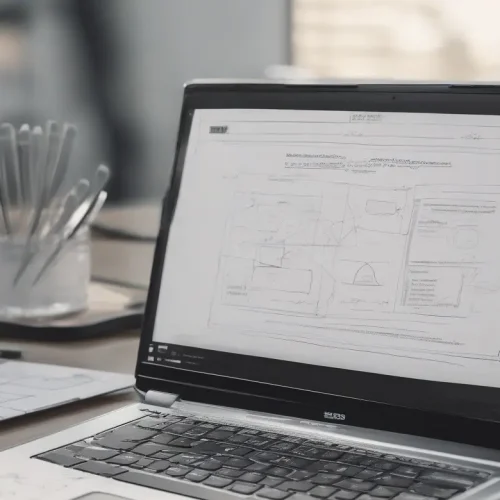Introduction: Why WordPress Powers the Web
WordPress is the undisputed leader in the world of content management systems (CMS), powering over 43% of all websites on the internet. This incredible popularity isn’t accidental. WordPress offers a unique combination of flexibility, power, and user-friendliness, making it the ideal platform for everything from personal blogs to complex e-commerce empires. Whether you are a seasoned developer or a complete beginner, understanding the key stages of website design with WordPress is fundamental to creating a professional, effective, and successful online presence. This comprehensive guide will walk you through the entire process, transforming a simple idea into a fully functional and polished website.
Stage 1: Strategy and Planning – The Foundation of Your Website
Before writing a single line of code or choosing a color palette, the most critical stage is planning. A well-defined strategy acts as the blueprint for your entire project, guiding your decisions and ensuring the final product meets your objectives. Rushing this phase is a common mistake that can lead to costly redesigns later.
Defining Your Website’s Purpose and Goals
First, ask the fundamental question: What is the primary purpose of this website? Is it to generate leads, sell products, provide information, build a community, or showcase a portfolio? Your goals should be S.M.A.R.T. (Specific, Measurable, Achievable, Relevant, Time-bound). For example, a goal might be “to increase online sales by 20% within the next six months” or “to capture 500 new email subscribers in the first quarter.” Clearly defined goals will influence every subsequent stage, from design to content creation.
Identifying Your Target Audience
You cannot build an effective website without knowing who you are building it for. Conduct thorough research to create detailed personas of your ideal visitors. Consider their demographics (age, location, gender), psychographics (interests, values, pain points), and technical proficiency. Understanding your audience helps you tailor the website’s tone, content, and design to resonate with them effectively, leading to higher engagement and conversion rates.
Stage 2: The Technical Setup – Domain and Hosting
With a solid plan in place, the next stage is to secure the technical infrastructure for your website. This involves choosing a memorable address and a reliable home for your site’s files.
Choosing and Registering a Domain Name
Your domain name is your website’s address on the internet (e.g., asaradco.com). A good domain name should be:
- Memorable and Easy to Spell: Avoid complex words or confusing spellings.
- Relevant to Your Brand: It should reflect your business name or a core aspect of your services.
- Concise: Shorter domains are generally easier to remember and type.
- Credible: While many extensions exist, .com is still the most recognized and trusted.
Selecting the Right WordPress Hosting
Web hosting is the service that stores your website’s files and makes them accessible to users worldwide. There are several types of hosting, each with its pros and cons:
- Shared Hosting: The most affordable option, where you share server resources with other websites. Ideal for new or low-traffic sites.
- VPS (Virtual Private Server) Hosting: A step up from shared hosting, offering a dedicated portion of a server’s resources for better performance and control.
- Managed WordPress Hosting: A premium service specifically optimized for WordPress. It often includes automatic updates, enhanced security, and expert support, making it an excellent choice for businesses that want a hassle-free experience.
Stage 3: WordPress Installation and Initial Configuration
Once you have your domain and hosting, it’s time to install the core WordPress software. Most modern hosting providers offer a “one-click” installation process that sets up WordPress on your server in minutes. After installation, you’ll need to configure some essential settings from the WordPress dashboard. This includes setting your site title and tagline, adjusting permalink structures for SEO-friendly URLs (e.g., choosing “Post name”), and setting your correct timezone.
Stage 4: Design and Aesthetics – Choosing and Customizing Your Theme
The visual design of your website is determined by a WordPress theme. A theme is a collection of templates and stylesheets that dictates your site’s appearance and layout. This is one of the most exciting stages of website design with WordPress, as it’s where your brand’s visual identity starts to take shape.
Finding the Perfect WordPress Theme
There are thousands of themes available, both free and premium. Free themes from the official WordPress repository are a great starting point, but premium themes often offer more advanced features, dedicated support, and greater customization options. When choosing a theme, look for one that is well-coded, responsive (looks great on all devices), has good reviews, and is regularly updated by its developers.
Installing and Customizing Your Theme
After selecting a theme, you can install it directly from your WordPress dashboard. Once activated, you can use the built-in WordPress Customizer to modify its appearance. This intuitive interface allows you to change colors, fonts, upload your logo and favicon, create navigation menus, and adjust layout settings, all while seeing a live preview of your changes.
Stage 5: Content Creation and Structuring
Content is the heart of your website. It’s the information that your visitors came to see. This stage involves planning, creating, and organizing all the text, images, and other media for your site.
Planning Your Website’s Architecture
Before writing, map out your site’s structure with a sitemap. This is a hierarchical list of all the pages you plan to have. A typical business website includes essential pages like:
- Home: The first impression, guiding users to key areas of your site.
- About Us: Tell your brand’s story and build trust.
- Services/Products: Detail what you offer.
- Blog: Share valuable content, improve SEO, and establish authority.
- Contact: Provide clear ways for visitors to get in touch.
Crafting High-Quality, SEO-Friendly Content
Each page should have well-written, engaging content that speaks directly to your target audience. Incorporate keywords naturally to improve your search engine rankings, but always prioritize readability and value for the user. Use clear headings (H2, H3), short paragraphs, and bullet points to make the content easy to scan and digest.
Stage 6: Extending Functionality with Plugins
Plugins are software add-ons that you can install to add new features and functionality to your WordPress website without touching any code. They are one of the primary reasons for WordPress’s immense flexibility.
Must-Have Plugins for Every Website
While the specific plugins you need will depend on your goals, some are essential for nearly every site:
- SEO Plugin: Tools like Yoast SEO or Rank Math guide you in optimizing your content for search engines.
- Security Plugin: Services like Wordfence Security or Sucuri help protect your site from malware and hacking attempts.
- Backup Plugin: Solutions like UpdraftPlus or BackupBuddy create regular backups of your site, which are crucial for disaster recovery.
- Performance Plugin: Caching plugins like W3 Total Cache or WP Rocket can dramatically improve your website’s loading speed.
Adding E-commerce with WooCommerce
If your goal is to sell products online, the WooCommerce plugin is the industry standard. This powerful, free plugin transforms your WordPress site into a full-featured online store, allowing you to manage products, inventory, payments, and shipping with ease.
Stage 7: Fine-Tuning and Customization
With your theme, content, and plugins in place, this stage is about refining the details. This involves setting up your main navigation menu to be intuitive, configuring widgets in your sidebar or footer (like a search bar or recent posts list), and ensuring your branding is consistent across the entire website. Double-check that your logo is clear, contact forms are working, and all internal links are pointing to the correct pages.
Stage 8: Pre-Launch Testing and Optimization
Before announcing your website to the world, a thorough testing phase is non-negotiable. This is your last chance to catch errors, bugs, and usability issues that could frustrate your visitors.
Cross-Browser and Responsiveness Testing
View your website on various web browsers (Chrome, Firefox, Safari, Edge) and devices (desktops, tablets, smartphones) to ensure that the layout, images, and functionality are consistent and user-friendly everywhere. Pay close attention to how menus and forms behave on smaller screens.
Performance and Speed Optimization
Website speed is a critical factor for both user experience and SEO. Use tools like Google PageSpeed Insights or GTmetrix to analyze your site’s loading time. Common optimization techniques include compressing images, leveraging browser caching, and minifying CSS and JavaScript files (often handled by performance plugins).
Final Content and Functionality Check
Proofread every page for spelling and grammatical errors. Click every link to ensure it works. Test every form to confirm submissions are being received. Go through the user journey for key actions, like purchasing a product or signing up for a newsletter, to ensure the process is smooth.
Stage 9: The Launch
After rigorous testing and final checks, it’s time for the most rewarding stage: launching your website. This involves making your site public and visible to search engines. If you were working on a temporary domain or a local server (using tools like XAMPP), this is when you migrate the site to your live server. Once live, make sure to submit your new sitemap to Google Search Console to encourage faster indexing.
Stage 10: Post-Launch Maintenance and Growth
Launching your website is not the end of the journey; it’s the beginning. Ongoing maintenance is vital for security, performance, and long-term success. This final stage is a continuous cycle of tasks:
- Regular Backups: Ensure your automated backup system is working correctly.
- Updates: Regularly update the WordPress core software, as well as all your themes and plugins, to patch security vulnerabilities and access new features.
- Security Monitoring: Keep an eye on your security logs for any suspicious activity.
- Performance Monitoring: Periodically check your site speed and address any new bottlenecks.
- Content Strategy: Continuously add new, valuable content through your blog to attract visitors and improve your SEO authority over time.
By following these ten essential stages of website design with WordPress, you create a structured, professional workflow that minimizes errors and maximizes results. This methodical approach ensures your website is not only visually appealing but also secure, functional, and perfectly aligned with your strategic goals.






